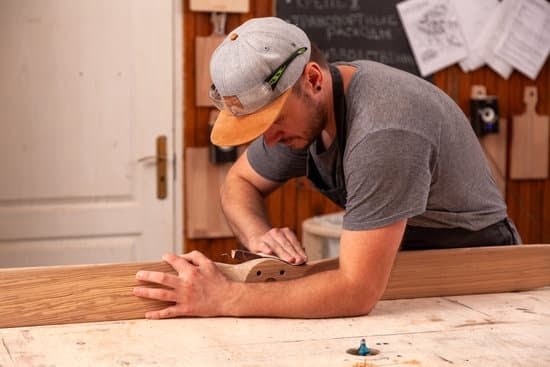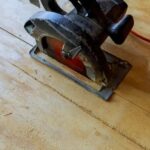Removing paint from woodwork is a crucial step in maintaining the beauty and integrity of wooden surfaces. Whether you’re restoring an antique piece or simply looking to refresh the appearance of your home, knowing how to effectively remove paint from woodwork is essential. However, this task comes with its own set of challenges that can make it seem daunting for many DIY enthusiasts.
When it comes to removing paint from woodwork, one of the most common challenges faced is ensuring that the process doesn’t damage the underlying wood surface. Different types of paints can have varying effects on wood, leading to potential discoloration, stains, or even structural damage if not properly handled. Additionally, stubborn layers of old paint combined with intricate details and hard-to-reach areas can make the process time-consuming and frustrating.
In this article, we will explore different methods and techniques for safely and effectively removing paint from woodwork. We will discuss the importance of understanding the types of paints used on wood surfaces and their impact. We will also provide tips for assessing the condition of the woodwork before starting the removal process and guide you through preparing the area and gathering necessary tools and materials.
With our step-by-step instructions and safety precautions, you’ll be well-equipped to tackle your paint removal project with confidence. So let’s dive in and discover how you can breathe new life into your woodwork by removing unwanted layers of paint.
Understanding the different types of paint and their impact on woodwork
Paint on woodwork can vary in type, and each type can have a different impact on the wood surface. Understanding these different types of paint and their potential effects is essential for successful paint removal from woodwork.
Common Types of Paint
There are several common types of paint used on woodwork, including oil-based paint, latex paint, acrylic paint, and enamel paint.
- Oil-based paints are known for their durability and smooth finish, but they can be more challenging to remove due to their strong adhesion properties.
- Latex paints are water-based and offer easy cleanup. They are typically less stubborn to remove than oil-based paints.
- Acrylic paints are similar to latex paints but have a higher pigment content. They provide good coverage but may require additional efforts for complete removal.
- Enamel paints provide a tough, glossy coating that is resistant to moisture and stains. Removing enamel paint from woodwork can be particularly difficult.
Impact on Wood Surface
Each type of paint can have varying impacts on the wood surface during the removal process.
- Oil-based paints can penetrate into the wood fibers, resulting in deep staining and requiring thorough stripping methods.
- Latex and acrylic paints often sit on top of the wood surface without fully penetrating it. This makes them relatively easier to remove through scraping or sanding techniques.
- Enamel paints create a hard shell-like coating that adheres strongly to the surface. Removing enamel paint may involve using strong solvents or more aggressive mechanical methods.
Understanding the type of paint on your woodwork will help you choose the most appropriate removal method and ensure effective results while minimizing potential damage to the underlying wood surface.
Assessing the condition of the woodwork before removing paint
Before diving into the paint removal process, it is crucial to assess the condition of the woodwork to ensure a smooth and successful outcome. By evaluating the woodwork beforehand, you can identify any underlying issues, determine the best approach for paint removal, and avoid potential damage to the surface. Here are some essential tips for assessing the condition of your woodwork:
- Surface Damage: Start by examining the woodwork for any visible damage such as cracks, dents, or splinters. These imperfections may require additional repair before proceeding with paint removal. Use a magnifying glass if necessary to inspect smaller details.
- Previous Paint Layers: Determine whether there are multiple layers of paint on top of each other or if it is just one layer. Older homes may have several layers of paint that have been applied over time. Removing multiple layers requires different techniques compared to removing a single layer.
- Adhesion and Integrity: Assess how well the current paint is adhering to the wood surface. Look for signs of peeling or flaking paint indicating poor adhesion. If there are areas where the paint is loose or easily coming off, it might indicate an underlying problem, such as moisture damage or improper preparation during prior painting projects.
By thoroughly examining these factors, you will be better equipped to choose the most appropriate method of paint removal and minimize any potential risks associated with damaging the woodwork.
Once you have assessed and understood the condition of your woodwork, you can confidently move forward in preparing for paint removal.
Preparing the area and gathering the necessary tools and materials
Before you begin the paint removal process, it is important to prepare the work area. Start by laying down drop cloths or plastic sheeting to protect the floor and any furniture or fixtures in the vicinity. This will catch any paint chips or debris that may come loose during the removal process. Additionally, covering nearby walls and trim with painter’s tape can help prevent accidental damage.
Next, gather all of the necessary tools and materials for removing paint from woodwork. Some essential tools include a sturdy scraper or putty knife for scraping away layers of paint, sandpaper or a sanding block for smoothing out rough spots, and a heat gun for loosening stubborn paint. Chemical stripping agents can also be effective for removing multiple layers of paint at once.
In addition to tools, there are certain safety gear items that should be worn during the paint removal process. These include safety glasses or goggles to protect your eyes from flying debris, a dust mask or respirator to prevent inhalation of potentially harmful particles, and gloves to shield your hands from chemicals or sharp objects.
Having these tools and materials ready before starting the paint removal process will save you time and effort. It is important to use high-quality tools that are suited for your specific project in order to achieve optimal results.
By taking the time to properly prepare the work area and gather all necessary tools and materials before beginning, you will set yourself up for successful paint removal from woodwork. This preparation ensures a smoother process overall while minimizing potential risks of damage or mess during removal.
Applying effective paint removal methods for woodwork
Scraping
One of the most common and straightforward methods for removing paint from woodwork is scraping. This method involves using a scraper tool to gently scrape away the paint layers from the wood surface. Before starting, it is important to ensure that the scraper blade is sharp and in good condition. Dull blades can make the process more difficult and may cause damage to the wood.
When scraping, it is best to work in small sections at a time. Apply light pressure and use long, smooth strokes to avoid gouging or scratching the wood surface. It may be helpful to scrape with the grain of the wood for better results. Additionally, using a putty knife or a specific paint scraper tool with a flat edge can provide better control and prevent accidental damage.
Sanding
Another effective method for removing paint from woodwork is sanding. Sanding allows for a more even removal of paint and can help smooth out any imperfections on the wood surface. It is important to note that this method creates a lot of dust, so wearing protective gear such as goggles and a dust mask is essential.
Begin by selecting an appropriate sandpaper grit based on the thickness of the paint layer and the condition of the woodwork. Coarse-grit sandpaper (such as 80-grit) is ideal for removing many layers of old, thick paint, while finer-grit sandpaper (such as 120-grit) works well for lighter coats or finishing touches.
To remove paint through sanding, start by applying even pressure across the painted areas in long strokes. Always follow the direction of the grain to avoid damaging or scratching the wood surface. Periodically check your progress by wiping off any dust residue or debris, ensuring that all paint layers are being effectively removed.
Chemical Stripping
For stubborn or hard-to-reach areas of paint, chemical stripping can be a highly effective method for paint removal on woodwork. Chemical strippers work by breaking down the bond between the paint and the wood, making it easier to remove. It is important to carefully follow the manufacturer’s instructions when using chemical strippers and take appropriate safety precautions.
Before applying any chemical stripper, ensure that the work area is well-ventilated and wear protective gloves and eyewear. Apply the chemical stripper evenly across the painted surface using a brush or spray bottle. Allow the stripper to sit according to the manufacturer’s recommendation; this typically ranges from 15 minutes to several hours. Once the paint starts to bubble or blister, use a scraper or putty knife to gently remove the softened paint layers.
After removing most of the paint, wipe down the wood surface with a clean cloth dampened in water or mineral spirits to remove any residue from the chemical stripper. Finally, sanding can be used as a finishing touch to achieve a smooth and clean surface.
By utilizing these effective paint removal methods – scraping, sanding, and chemical stripping – you can confidently tackle your woodwork restoration project. Remember to choose a method that suits your specific needs based on factors like paint thickness and accessibility of different areas on your woodwork. With patience and proper technique, you can achieve great results in removing paint from woodwork while preserving its beauty and integrity.
Safety precautions and protective measures during paint removal
When it comes to removing paint from woodwork, safety precautions and protective measures are crucial to ensure the well-being of both the person undertaking the task and the surrounding environment. The process of paint removal can expose individuals to potentially harmful substances and create hazardous conditions if not approached with care. Here are some important safety tips to keep in mind during paint removal:
Wear protective gear
Protecting yourself from exposure to chemicals and potential injury is essential. Before starting the paint removal process, make sure to wear appropriate personal protective equipment (PPE). This includes safety goggles or glasses, gloves, long sleeves, pants, and a mask or respirator. These items will shield your eyes, skin, lungs, and hands from any chemicals or paint particles that may be released during the removal process.
Maintain proper ventilation
Proper ventilation is crucial during paint removal to dissipate fumes and prevent inhalation of harmful substances. Ensure you are working in a well-ventilated area by opening windows or using fans to improve air circulation. If you’re working indoors, consider using an exhaust fan or setting up an air purifier to remove any lingering particles or fumes.
Dispose of materials safely
It’s important to dispose of the removed paint and any materials used for its removal safely. Do not pour leftover paint down drains or throw away used materials in regular trash bins. Follow local regulations for proper disposal methods such as taking them to a recycling center or hazardous waste facility.
Protect surrounding areas
Take precautions to protect adjacent surfaces and furniture from accidental damage during the paint removal process. Cover nearby objects with drop cloths or plastic sheets before beginning the project.
By following these safety precautions and protective measures, you can minimize health risks associated with paint removal while creating a safer environment for yourself and those around you. Remember, caution and preparedness are key when it comes to successfully removing paint from woodwork.
Troubleshooting common challenges and mistakes during paint removal
When removing paint from woodwork, it is not uncommon to encounter various challenges and make mistakes along the way. Understanding these common issues and knowing how to address them can help ensure a successful paint removal process. In this section, we will discuss some of the most frequently faced challenges during paint removal and provide effective solutions to overcome them.
One common challenge is dealing with stubborn or thick layers of paint that are difficult to remove. This can be caused by multiple previous coats of paint, especially if they have been applied over the years without proper surface preparation. When faced with stubborn paint, scraping alone may not suffice.
It may be necessary to use a chemical stripping agent or heat gun in combination with scraping or sanding. Chemical strippers work by softening the paint, making it easier to scrape off, while heat guns can help loosen the paint for removal. However, it is important to follow safety precautions when using chemical strippers or heat guns, as improper use can cause damage to the woodwork or pose health risks.
Another challenge that may arise during the paint removal process is color bleeding or staining of the wood surface. This happens when pigments from the old paint seep into the wood grain pores and create unsightly marks or discoloration. To prevent color bleeding, it is crucial to properly prepare the woodwork before starting the removal process.
This includes ensuring that any existing finish or sealant is completely removed and conducting a thorough sanding of the surface as needed. Additionally, using a high-quality primer before repainting can help minimize color bleeding by creating a barrier between the new paint and the wood.
Damage to the wood surface can also occur if excessive force is applied during scraping or sanding. It is essential to exercise caution and use gentle pressure when removing paint so as not to gouge or scratch the woodwork. If minor damage does occur, it can usually be repaired with wood putty or filler before refinishing. However, if the damage is extensive, it may require professional assistance to restore the woodwork.
In summary, troubleshooting common challenges and mistakes during paint removal is an integral part of achieving a successful outcome. By being aware of these challenges and following the recommended solutions, individuals can effectively tackle their paint removal projects and achieve a smooth and aesthetically pleasing final result.
| Challenges | Solutions |
|---|---|
| Stubborn or thick layers of paint | – Use chemical strippers or heat guns in combination with scraping or sanding
|
| Color bleeding or staining of the wood surface | – Properly prepare the woodwork before removal
|
| Damage to the wood surface | – Exercise caution and use gentle pressure when scraping or sanding
|
Restoring the woodwork after paint removal
Once you have successfully removed the paint from your woodwork, it’s important to take the necessary steps to restore and revitalize the surface. This will not only enhance the appearance of the wood but also protect it from future damage. Here are some essential steps to follow during the restoration process.
- Repair any damages: Carefully inspect the woodwork for any signs of damage, such as scratches, dents, or gouges. Use wood filler or putty to fill in these imperfections and allow it to dry completely. Once dry, sand down the filled areas until they are smooth and blend seamlessly with the surrounding wood.
- Sanding: To achieve a smooth and even surface, sanding is crucial after paint removal. Start with a coarse-grit sandpaper to remove any remaining paint residues or rough patches left behind by scraping or chemical stripping. Gradually move on to finer grit sandpapers until the surface is smooth to touch.
- Refinishing options: After sanding, you can choose to leave the natural beauty of the wood exposed by applying a clear sealant or varnish that enhances its natural color and grain patterns. If you prefer a different look, opt for a stain that complements your aesthetic preferences or matches other elements in the room. Apply multiple coats of either product using a brush or cloth, following manufacturer instructions for drying time between coats.
In addition to these restoration steps, there are several products and techniques available that can further enhance your woodwork’s appearance post-paint removal:
- Wood polish: Using a good quality wood polish can add shine and provide extra protection to your restored woodwork.
- Wax finish: Applying wax onto your sanded and refinished surfaces can create a subtle sheen while offering added protection against moisture.
- Glaze effects: Consider adding glaze effects such as antique glazing or distressing techniques for a unique and aged appearance.
Remember to always read and follow the instructions on any products or materials you use during the restoration process. Take your time, be meticulous in your work, and always strive for a smooth and aesthetically pleasing final result.
By following these steps and recommendations, you can successfully restore your woodwork after paint removal, transforming it into a stunning feature within your home.
Maintenance tips to prevent future paint buildup on woodwork
Preventing future paint buildup on woodwork is essential to maintain its appearance and minimize the need for frequent paint removal. By following a few maintenance tips, you can keep your woodwork looking beautiful and extend its lifespan.
Firstly, regular cleaning is crucial in preventing paint buildup. Dust and dirt can accumulate over time and create an uneven surface, making it easier for paint to adhere. Use a soft cloth or feather duster to regularly remove dust from the woodwork. Avoid using harsh solvents or abrasive cleaners, as they may damage the wood surface.
Additionally, it’s important to protect your woodwork from moisture and humidity. Excessive moisture can lead to peeling and cracking of the paint. Make sure that there are no water leaks or excessive humidity in the area where the woodwork is located. Consider using a dehumidifier if necessary.
Furthermore, applying a protective finish on the woodwork can help prevent paint buildup. A clear varnish or sealant will provide a barrier between the wood surface and any potential layers of paint. This will make it easier to remove any future paint if needed.
Lastly, avoid placing objects directly on the woodwork that may cause scratches or damage to the surface. Use coasters for beverages, place mats for hot dishes, and felt pads under furniture legs to prevent scratches.
By following these maintenance tips, you can preserve the quality and appearance of your woodwork while minimizing future paint buildup. Taking care of your woodwork regularly will save you time and effort in removing stubborn paint layers in the long run.
Conclusion
In conclusion, removing paint from woodwork is an important task that can rejuvenate the appearance of your wood surfaces. Throughout this article, we have explored the significance of paint removal and discussed the common challenges that may arise during the process. We have also provided a comprehensive guide on how to effectively remove paint from woodwork.
Understanding the different types of paints commonly used on woodwork is crucial in determining the appropriate method for removing them. By assessing the condition of your woodwork before starting the removal process, you can identify any surface damage or previous paint layers, which will help you choose the most suitable technique.
Preparing the work area properly and gathering the necessary tools and materials are essential steps in achieving successful paint removal. Whether you opt for scraping, sanding, chemical stripping, or utilizing a heat gun, each method has its own pros and cons. Safety precautions should always be prioritized during this process to protect yourself from potential hazards.
While troubleshooting common challenges during paint removal is important, it is equally valuable to know how to restore your woodwork after paint removal. Repairing damages, sanding, and choosing suitable refinishing options are vital aspects in achieving a smooth, aesthetically pleasing final result.
Lastly, remember that regular maintenance and care practices for your woodwork are key in preventing future paint buildup. By implementing preventive measures and maintaining its appearance over time, you can reduce the need for frequent paint removal projects.
In summary, removing paint from woodwork requires careful evaluation of various factors such as type of paint used and condition of the surface. With proper preparation, effective techniques, and safety precautions in place, you can confidently tackle your paint removal projects and enhance the beauty of your wood surfaces.
Frequently Asked Questions
What is the easiest way to remove paint from wood trim?
The easiest way to remove paint from wood trim is by using a chemical paint stripper or remover. These products are readily available at hardware stores and come in various forms such as liquids, gels, or aerosols. Before applying the paint stripper, it is essential to protect yourself by wearing gloves, goggles, and a mask to avoid any contact with harmful fumes or skin irritants.
Following the instructions on the product packaging, apply a generous amount of the paint stripper onto the painted areas of the wood trim. Allow it to sit for the recommended time, usually around 15-30 minutes, to penetrate and soften the paint. Finally, use a putty knife or scraper to gently scrape away the softened paint from the wood surface.
What is the best way to remove paint from woodwork?
The best way to remove paint from woodwork involves using a combination of scraping and sanding techniques. Start by using a putty knife or scraper to carefully scrape off any loose or peeling paint from the woodwork’s surface. Be cautious not to dig too deeply into the wood as it may cause damage.
Once you have removed as much loose paint as possible, utilize sandpaper with medium-grit (around 120-150) to sand down any remaining stubborn bits of paint on the woodwork. Sand in gentle circular motions until all traces of paint are removed while being careful not to oversand or damage the surface underneath. Finish off by wiping away any dust with a damp cloth and allowing the woodwork to dry completely before refinishing or painting.
How do you remove paint from wood trim without damaging the wood?
To remove paint from wood trim without damaging it requires caution and some manual effort. One method that is effective at preserving wooden surfaces while removing old layers of paint is using heat through a heat gun or hairdryer. By directing hot air onto the painted area for several seconds, heat helps loosen and soften the paint without causing harm to the underlying wood if done carefully with moderate heat settings. Once heated, use a putty knife or scraper to gently scrape away the softened paint from the wood trim.
Keep in mind to work slowly and avoid pressing too hard to avoid scratching or gouging the wood. If needed, repeat the process until all layers of paint have been removed. Afterward, use fine-grit sandpaper to smooth out any remaining residue or blemishes, then wipe clean with a damp cloth before refinishing or applying new paint.

Hi everyone! I’m a woodworker and blogger, and this is my woodworking blog. In my blog, I share tips and tricks for woodworkers of all skill levels, as well as project ideas that you can try yourself.





